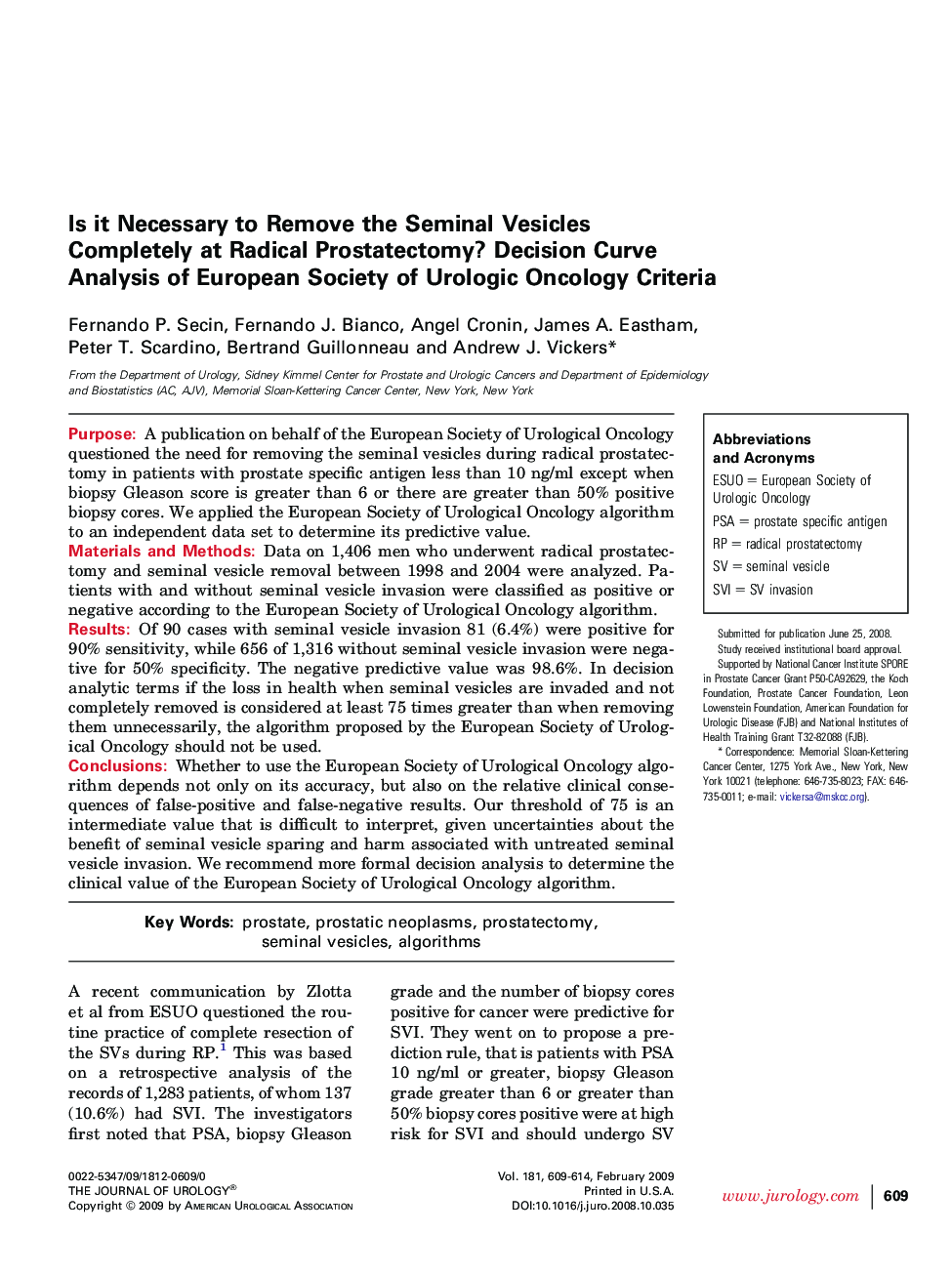| Article ID | Journal | Published Year | Pages | File Type |
|---|---|---|---|---|
| 3871344 | The Journal of Urology | 2009 | 6 Pages |
PurposeA publication on behalf of the European Society of Urological Oncology questioned the need for removing the seminal vesicles during radical prostatectomy in patients with prostate specific antigen less than 10 ng/ml except when biopsy Gleason score is greater than 6 or there are greater than 50% positive biopsy cores. We applied the European Society of Urological Oncology algorithm to an independent data set to determine its predictive value.Materials and MethodsData on 1,406 men who underwent radical prostatectomy and seminal vesicle removal between 1998 and 2004 were analyzed. Patients with and without seminal vesicle invasion were classified as positive or negative according to the European Society of Urological Oncology algorithm.ResultsOf 90 cases with seminal vesicle invasion 81 (6.4%) were positive for 90% sensitivity, while 656 of 1,316 without seminal vesicle invasion were negative for 50% specificity. The negative predictive value was 98.6%. In decision analytic terms if the loss in health when seminal vesicles are invaded and not completely removed is considered at least 75 times greater than when removing them unnecessarily, the algorithm proposed by the European Society of Urological Oncology should not be used.ConclusionsWhether to use the European Society of Urological Oncology algorithm depends not only on its accuracy, but also on the relative clinical consequences of false-positive and false-negative results. Our threshold of 75 is an intermediate value that is difficult to interpret, given uncertainties about the benefit of seminal vesicle sparing and harm associated with untreated seminal vesicle invasion. We recommend more formal decision analysis to determine the clinical value of the European Society of Urological Oncology algorithm.
